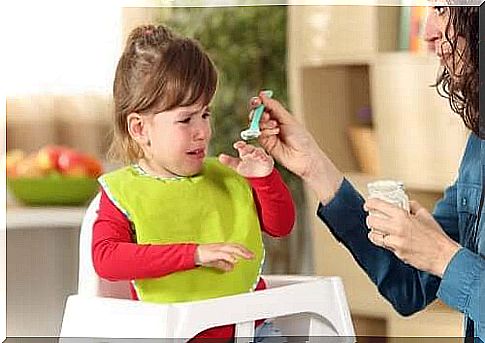Selective Eating Disorder In Children – You Are Mom

First of all, selective eating disorders should not be confused with the reluctance to eat that many children experience. Indeed, it is common for children to have certain feeding difficulties. A preference for certain foods and a reluctance to eat others. However, in some cases the rejection becomes so strong that nutritional intake is limited to a very small group of foods. Hence, it can compromise nutritional requirements. This is the case with selective eating disorder.
Previously, this syndrome was not categorized as such. However, in the latest revision of the Diagnostic and Statistical Manual of Mental Disorders (DSM-5), selective eating was recognized as a disorder in its own right with well-defined characteristics. We now know that the tendency to avoid large food groups goes beyond the whims or bad behavior of the child.
Selective eating disorder
Selective eating syndrome refers to a restricted and unvaried diet characterized by a profound refusal to taste new foods. Avoidance is based on the sensory characteristics of the food (texture, color, shape). Finally, it has important nutritional consequences.

Often these children fail to reach their normal weight as they grow. It is also common for them to lose a lot of weight. Likewise, these problems are usually associated with severe nutritional deficiencies. Indeed, it is often the vegetables, meat or fish that are rejected.
This disorder also has a psychosocial impact. Indeed, these children tend to avoid social events or their difficulty can be a problem. It is a disorder that affects the well-being of the child who suffers from it but also that of his parents. Often, parents feel helpless in the face of their child’s continual refusals.
It’s not just a whim
We must keep in mind that this situation is not the whim of a “spoiled” child. It is a syndrome that has its origins in multiple causes. And, very often this disorder has deeper implications. While the exact causes are not yet known, it appears to be related to the following:
- It is common for these children to have an anxious personality. Possibly with obsessive-compulsive traits or even a tendency towards social phobia. They also show poor adaptation to change and novelty. It is possible that selective eating disorder is a manifestation of this rigid and inflexible personality.
- Emotional problems with parents were also observed in these children. Indeed, these children, often unable to express themselves verbally, are subject to tantrums or cries to communicate their discontent. This type of behavior can obviously generate a lot of stress, discomfort and nervousness in parents. This can sometimes hinder the creation of emotional bond and trust within the parent-child relationship. To avoid these situations, parents usually choose to give the child only the foods he accepts. However, this reinforces the child’s difficulties.
- Various studies have found that a significant percentage of children and young people with this disorder have a deep phobia of choking or vomiting. Finally, some are subject to certain food allergies.

How to prevent and treat selective eating disorders?
- When your baby begins to feed well, the Child-Led Diversification (CRD) method can help you explore the diversity of foods and tackle them at your own pace. In this way, the toddler experiences it as a natural and fun process and not as something forced.
- We must also be consistent and patient. For that, we must not lose our calm nor give in to the refusal of the child.
- For the little ones, we are their models. It is important that all family members eat what is on the table, without exception. Getting together to eat and having this social time together is also important.
- Also try to innovate in the kitchen. For example, by including different textures, flavors and ways of preparation. Leaving the routine will stimulate the child’s curiosity and taste for new flavors.
- Once the disorder is present, it is important to consult a professional. In some cases, nutritional deficiencies may require a short hospital stay.
- In all cases, it will be necessary to intervene in an interdisciplinary manner. That is to say by involving psychologist, doctor and nutritionist. It will be essential to work on the possible rigid personality of the child and on the link with the parents. And, above all, to make progressive exposures to new foods.








